-

Welcome to Phoenix Rising!
Created in 2008, Phoenix Rising is the largest and oldest forum dedicated to furthering the understanding of, and finding treatments for, complex chronic illnesses such as chronic fatigue syndrome (ME/CFS), fibromyalgia, long COVID, postural orthostatic tachycardia syndrome (POTS), mast cell activation syndrome (MCAS), and allied diseases.
To become a member, simply click the Register button at the top right.
You are using an out of date browser. It may not display this or other websites correctly.
You should upgrade or use an alternative browser.
You should upgrade or use an alternative browser.
Pediatric Primer
- Thread starter Denise
- Start date
One of the better descriptions of the symptoms I've seen:
And a polite "bugger off" to the psychobabblers:
A good description of the severity of ME/CFS:
Recovery/remission data does look much better than it is for adults:
Pediatric myalgic encephalomyelitis/chronic fatigue syndrome (ME/CFS) is a complex disease characterized by overwhelming fatigue and a substantial loss of physical and cognitive function. The etiology is uncertain and there is no curative treatment. The cardinal feature is a sensation of feeling ill (malaise) and worsening of symptoms following minimal physical or mental exertion. This post-exertional worsening can persist for hours, days, or weeks, and is not relieved by rest or sleep. Other symptoms include unrefreshing or disturbed sleep, cognitive impairment, and a multitude of immune, neurological, and autonomic symptoms. Orthostatic intolerance (OI) is a common co-morbid condition.
And a polite "bugger off" to the psychobabblers:
Significant pathophysiological changes found in ME/CFS show that it is an organic/physical illness. Secondary psychological symptoms can be present in some patients as occurs in many other chronic illnesses, but psychological factors have not been shown to be the cause.
A good description of the severity of ME/CFS:
Mildly affected young people might be able to attend school full-time or part-time, but they might have to limit sport and after-school activities and have frequent school absences. ME/CFS has been found to be the most common cause of long-term absence from school (9, 13–16). More severely affected young people can be wheelchair dependent, housebound, or bedbound. The more impaired might even have difficulty participating in home tutoring sessions. In young persons with ME/CFS, overall self-reported quality of life is often lower than in other illnesses such as diabetes, epilepsy, and cystic fibrosis (17, 18).
Recovery/remission data does look much better than it is for adults:
In a follow-up study of nearly 700 young people the average duration of illness of those who report having “recovered” was 4–5 years with a range from 1 to 15 years. By 5 years, 60% reported recovery, and by 12 years, 88% reported recovery. Of those who reported recovery, about one-third admitted to modifying their activities to remain feeling well (19). Several other studies found that although many patients improved, 20–48% showed no improvement or actually had worse fatigue and physical impairment at follow-up times ranging from 2 to 13 years (20–22). Even among those who report having completely recovered, many describe persistent symptoms that are not reported by healthy individuals (20).
A very strong endorsement of pacing:
And the opposite of the rationing of medical care we've seen in some quackier documents:
Some interesting data regarding family prevalence rates:
They're very dismissive of Fukuda, with more enthusiasm for CCC:
But they've proposed their own criteria, due to CCC being a bit complicated for clinical use:
Establishing a diagnosis frequently provides the patient and parents much relief. Early diagnosis of ME/CFS can lessen the impact of the illness through timely support and intervention. The unequivocal advice for careful avoidance of overexertion can help to both avoid deterioration and facilitate improvement.
And the opposite of the rationing of medical care we've seen in some quackier documents:
The chronicity of ME/CFS signifies the need for continuing management and periodic re-evaluation. Regular monitoring can support the young patient and uncover a change of symptoms, or the emergence of a new illness. Young patients can do well when treated in a primary care setting, but given the complexity of this illness, appropriate referral to other health practitioners (preferably those familiar with ME/CFS) is often needed.
Some interesting data regarding family prevalence rates:
Studies have shown that in approximately 20% of patients, ME/CFS affects more than one family member and in 90% of them, the affected relatives were genetically related (29). The prevalence of ME/CFS was found to be 5.1% in the offspring of mothers with ME/CFS (29). Another study showed an excess relative risk for developing ME/CFS in first (2.7), second (2.3), and third (1.9) degree relatives (30). Twin studies have shown that the concordance rate for a ME/CFS-like illness was 55% in monozygotic twins and 19% in dizygotic twins (31).
They're very dismissive of Fukuda, with more enthusiasm for CCC:
The 1994 Fukuda case definition (1), see Appendix A, is often used, but was designed for research purposes in adults and can exclude some young patients with ME/CFS and include others, who are later found to have another illness (27). The 2003 Canadian clinical case definition (CCC) (24) is widely used in adults, because it emphasizes the core symptoms of the illness. A pediatric case definition based on the CCC was published in 2006 (27). The latter is somewhat complex for use in clinical practice.
But they've proposed their own criteria, due to CCC being a bit complicated for clinical use:
The following diagnostic criteria are offered by our experienced clinicians and are based on their collective experience and insight. The criteria provide useful diagnostic sensitivity within a heterogeneous pediatric ME/CFS patient population. A symptom severity scoring system is included to increase the specificity of the diagnostic criteria.
Myalgic encephalomyelitis/chronic fatigue syndrome is characterized by numerous symptoms in multiple body systems, but its diagnosis requires only the presence of a group of specific, core symptoms.
• The cardinal feature of ME/CFS is malaise and the exacerbation of symptoms after a variety of forms of effort (most commonly physical or cognitive activity or orthostatic stress). Post-exertional symptoms can persist for hours, days, or weeks and are not relieved by rest. This symptom is uncommon in other illnesses.
• Other core symptoms are impaired physical and/or cognitive function, fatigue, sleep disturbance, cognitive symptoms, and pain.
• Some or all symptoms are present every day (symptoms often fluctuate significantly in intensity during the day or from day-to-day).
• Symptoms are mostly moderate to severe.
• Symptoms have persisted or recurred for at least 6 months (a provisional diagnosis and appropriate management can be instituted before 6 months).
• Other fatiguing illnesses must be excluded by history, physical examination, and medical testing.
trishrhymes
Senior Member
- Messages
- 2,158
I've started reading it, and so far it looks excellent.
I hope Esther Crawley reads and digests every word and feels ashamed of herself. A few retracted papers would be appreciated too, Esther.
I hope Esther Crawley reads and digests every word and feels ashamed of herself. A few retracted papers would be appreciated too, Esther.
Diagnostic form, including evaluation of severity:


Lab testing to rule out other diseases:
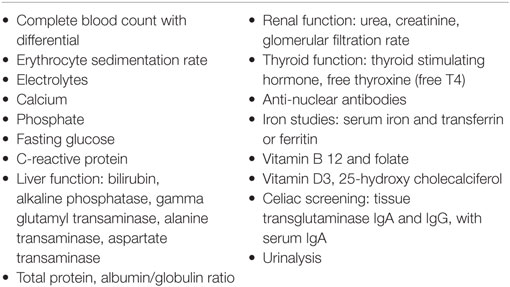
Additional tests as indicated:
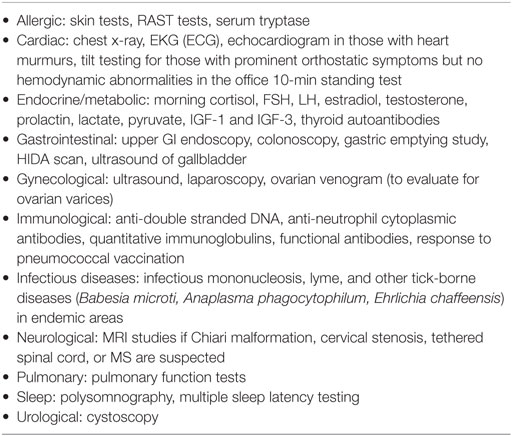
Differential and exclusionary diagnoses to consider:
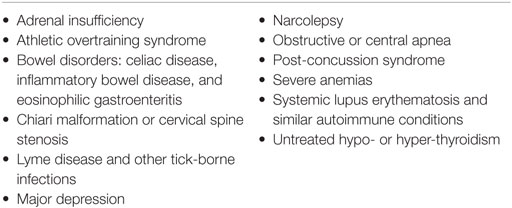
Comorbid conditions:
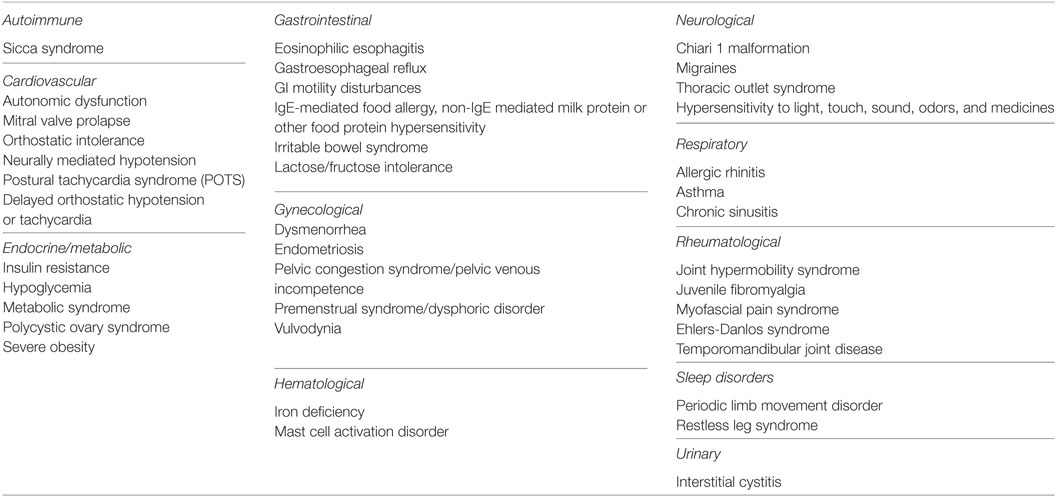
Differences in symptoms compared to anxiety or depression:
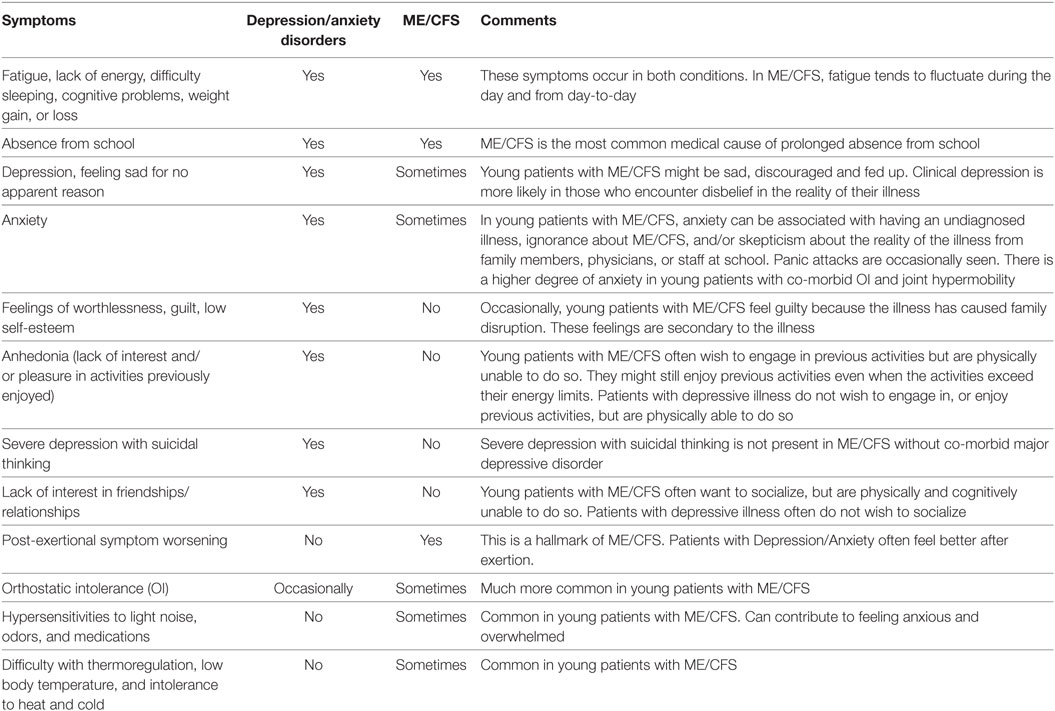
Differences compared to Munchausen's by Proxy:
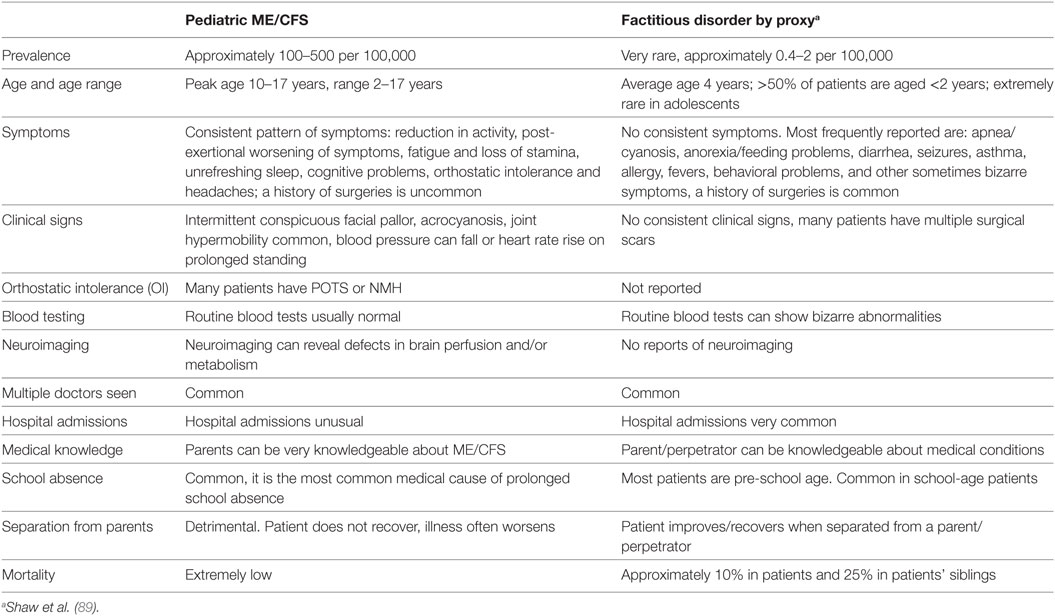
Lab testing to rule out other diseases:

Additional tests as indicated:

Differential and exclusionary diagnoses to consider:

Comorbid conditions:

Differences in symptoms compared to anxiety or depression:

Differences compared to Munchausen's by Proxy:

Explicit instructions for what a doctor can do for a child with ME:
There are several nice charts of possible treatments for various symptoms. Sleep:
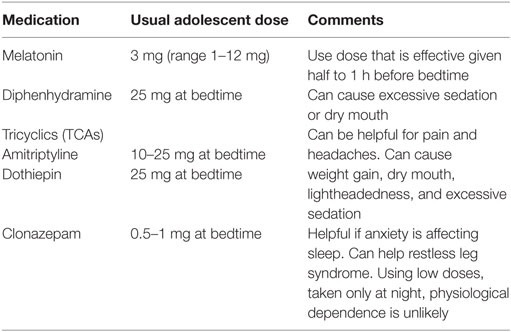
Headaches:

Pain:
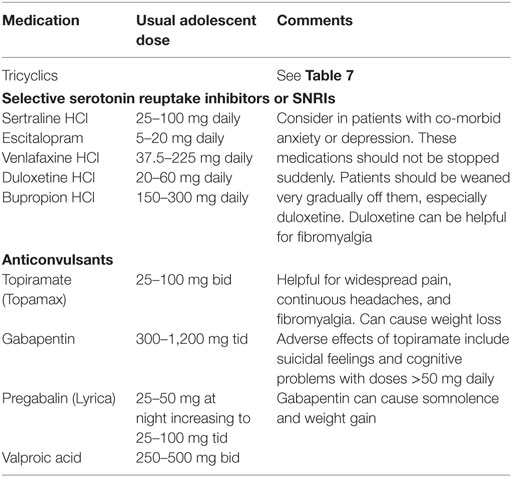
Personally I disagree with PEM starting immediately after exertion. That can happen with a different form of exercise intolerance which we also probably often have:
Good info regarding GET:
I doubt this ever actually happens. It's just a "maybe" situation we get from quacks pushing exercise:
I don't think there's any scientific support for the claim that exercise programs improve outcomes for people who are already in remission:
I'm a bit nervous about phrases like "remaining as active as possible." I think it distracts from putting the emphasis on avoiding excessive activity:
I wish they'd stopped at pacing:
They seem to be advocating symptom-based GET, which isn't as likely to be physically harmful, but still distracts from avoidance of excess exertion. It also creates expectations that exercise can improve symptoms or the ME itself, which is not supported by any evidence:
But again, a good caveat:
Currently, there is no treatment protocol or intervention which will cure ME/CFS. The role of the physician is, therefore, first, to do no harm, second, to try to improve daily function, expand activity, and ameliorate specific symptoms, and third to support the patient and the family. School personnel often need to be educated about ME/CFS and made aware that ME/CFS is a physical/organic illness, not a psychological disorder. We caution against reliance on internet-based information because much of it is anecdotal, uncorroborated, and may be designed to sell unproven products or services.
There are several nice charts of possible treatments for various symptoms. Sleep:

Headaches:

Pain:

Personally I disagree with PEM starting immediately after exertion. That can happen with a different form of exercise intolerance which we also probably often have:
Following even minor physical, cognitive or orthostatic activity, the fatigue and other ME/CFS symptoms are worsened. This worsening of symptoms can occur any time from immediately following activity, to up to 48 hours following activity and it can last for days or weeks or months. This phenomenon is the cardinal feature of ME/CFS.
Good info regarding GET:
Adding an exercise program to the schedule of a young person who can barely manage to cope with limited educational activities can be counterproductive. Exercise has been promoted as therapeutic in patients with ME/CFS, but many patients drop out of exercise studies because exercise clearly made them worse (101). Some individuals with ME/CFS mistakenly over-exercise in an attempt to reduce fatigue and then incur post-exertional relapse. No studies have shown that exercise can produce a cure for ME/CFS.
I doubt this ever actually happens. It's just a "maybe" situation we get from quacks pushing exercise:
Occasionally an excess of caution in young patients and/or their care givers can result in too much rest.
I don't think there's any scientific support for the claim that exercise programs improve outcomes for people who are already in remission:
However, for some patients with less severe ME/CFS, or during a remission, a suitable exercise program can improve function and provide some enjoyment. Any exercise program should not take priority over activities of daily living, education and socialization. Special care also needs to be taken to ensure that exercise is not advanced too rapidly or too soon, as by definition, excessive exercise can exacerbate ME/CFS symptoms.
I'm a bit nervous about phrases like "remaining as active as possible." I think it distracts from putting the emphasis on avoiding excessive activity:
Young people with ME/CFS often do better when they (and their parents) learn to adapt their lifestyles to live within their capabilities, and pace or spread out their activities so that they can avoid a boom and bust cycle of over-activity on a given day followed by a “crash” the following day. Remaining as active as possible while avoiding post-exertional flare-ups delineates an optimal zone of activity termed the “energy envelope.” It has been shown in adults that fatigue severity declines when patients stay within their energy envelope (103).
I wish they'd stopped at pacing:
Guidelines for exercise in healthy, but sedentary young people are inappropriate for patients with ME/CFS, because strict adherence to these guidelines can cause post-exertional relapse. For some young patients, it might be necessary to first treat their OI and improve their ability to remain upright before any exercise can be adequately tolerated.
They seem to be advocating symptom-based GET, which isn't as likely to be physically harmful, but still distracts from avoidance of excess exertion. It also creates expectations that exercise can improve symptoms or the ME itself, which is not supported by any evidence:
For the Moderately Impaired
...
Exercise should begin with as little as 1–2 min of gentle stretching followed by rest. When recovery has occurred another 1–2 min can be attempted. When stretching exercises do not trigger post-exertional symptoms, intervals of recumbent exercise can be added such as leg lifts while supine, or the use of a recumbent stationary bicycle. The individual can be encouraged to increase the duration of activity very gradually, provided that the prior period of activity has not aggravated symptoms, until a reasonable exercise volume has been achieved. Rest between activities is needed, and young people are advised to avoid the “push-crash” cycle of excessive activity on a good day followed by prolonged post-exertional collapse.
Mildly Impaired Patients
Leisurely walking with an initial duration of 5–15 min followed by a rest is suggested. The duration or pace of the walking can be increased gradually provided post-exertional symptoms do not occur.
But again, a good caveat:
Higher Functioning Patients
An exercise program might involve joining some organized sporting activities at school, but with modified participation. The effect of exercise on ME/CFS should be discussed with the student, her/his parents and the school personnel. Everyone should be reminded that when the patient feels that she/he has done enough, she/he must stop and rest and never force her/himself to achieve more. Fluctuations in illness severity are also common and patients might find that they need to reduce their activities for a period of time.
Some of the recommendations for dealing with OI do not take the underlying ME into account. Walking around, flexing muscles, etc, can trigger PEM in moderate and severe patients. I'd be a lot happier if they included a warning about that.
Possible medications for OI treatment:
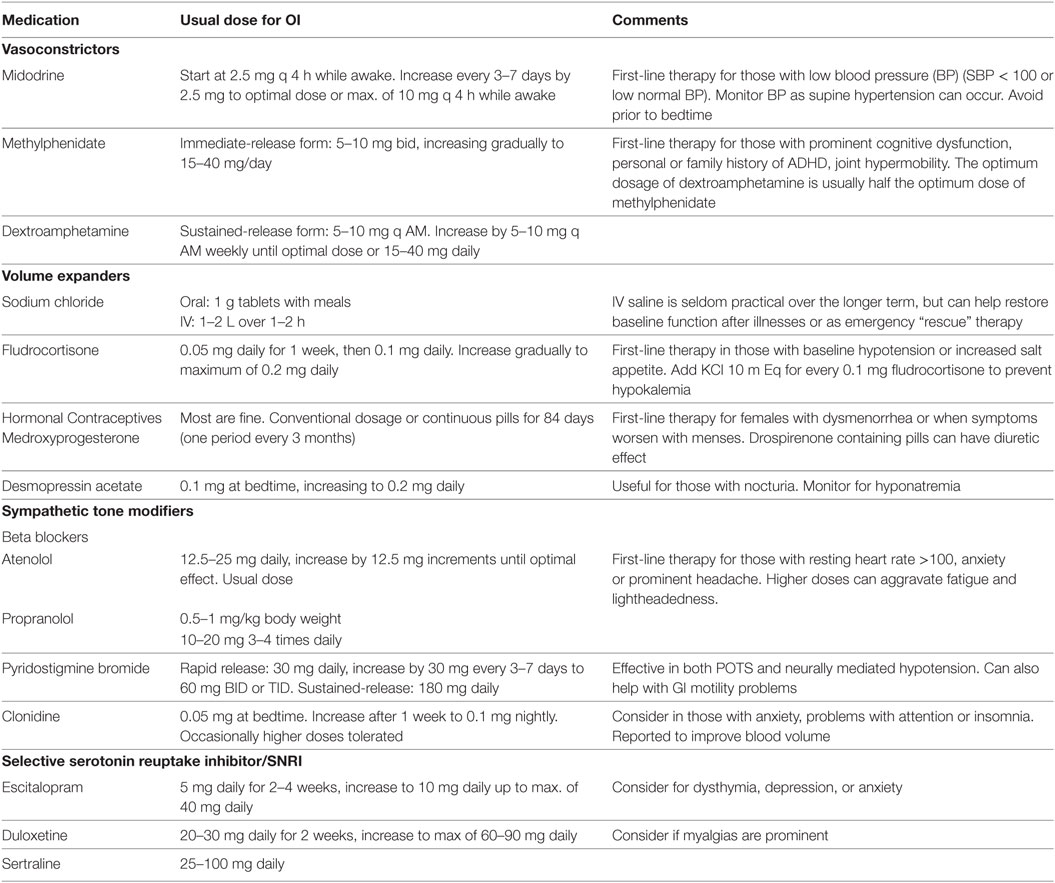
I think they're underestimating the prevalence of homebound patients:
The sections on very severe (bedridden) ME are generally very good. One quibble I have is with the phrasing of the warning that staff might try to force rehabilitation too rapidly. They shouldn't be forcing rehabilitation at all.
Again, CBT/GET is getting much more credit than it's due. It hasn't been shown to be of any value in mild or moderate patients either:
Apparently they haven't read the studies showing abnormal immune response corresponding with increased symptoms lasting at least a month after getting the flu vaccine:
Possible medications for OI treatment:

I think they're underestimating the prevalence of homebound patients:
Some young patients with ME/CFS are severely ill and are wheelchair dependent, housebound, or bedridden, sometimes for months or years. Many are too debilitated to be brought to a doctor’s office. Severe post-exertional symptoms can result if a visit to a hospital emergency room should become necessary. Published data on the characteristics of this group are lacking. Our clinicians estimate that about 5–10% of patients might be severely affected and 2–5% might be very severely affected and bedridden at some time during the course of the illness, but no studies have confirmed these numbers.
The sections on very severe (bedridden) ME are generally very good. One quibble I have is with the phrasing of the warning that staff might try to force rehabilitation too rapidly. They shouldn't be forcing rehabilitation at all.
Again, CBT/GET is getting much more credit than it's due. It hasn't been shown to be of any value in mild or moderate patients either:
While cognitive behavioral therapy (CBT) and graded exercise therapy (GET) have been promoted as of value in mild and moderate ME/CFS, there is no evidence that they are of therapeutic value in very severely affected patients.
Apparently they haven't read the studies showing abnormal immune response corresponding with increased symptoms lasting at least a month after getting the flu vaccine:
Yearly immunization against influenza will prevent the serious relapse that can follow this illness.
Last edited:
@Valentijn Thanks for running through that. I've read most of it and had similar reactions.Overall, I think its good and will be helpful but that statement about CBT/GET in mild isn't supported by evidence except oxford. And i was surprised by the vaccine recommendation and the estimates of severely ill.
The school based material looks useful and is much needed
The school based material looks useful and is much needed
Last edited:
dreampop
Senior Member
- Messages
- 296
I don't get PEM immediately after exertion, but my symptoms do worsen and stay worse so I understand the confusion.
The percent severally ill/recovery rates don't make sense at all to me. I think part of it is, its easier to stay in school than it is to work/cook/commute/manage a household so that may classify you as "less severe" when your still as sick. That was the case for me. Or CFS may be more present in young people than in adults. Or over-diagnosed or there may be normal periods of fatigue in youth that get counted as CFS. Because 88% recovery rates don't jive with 5-8% of adults. Those numbers just can't be the same condition, they can't even be the same waste basket.
The percent severally ill/recovery rates don't make sense at all to me. I think part of it is, its easier to stay in school than it is to work/cook/commute/manage a household so that may classify you as "less severe" when your still as sick. That was the case for me. Or CFS may be more present in young people than in adults. Or over-diagnosed or there may be normal periods of fatigue in youth that get counted as CFS. Because 88% recovery rates don't jive with 5-8% of adults. Those numbers just can't be the same condition, they can't even be the same waste basket.
GreyOwl
Dx: strong belief system, avoidance, hypervigilant
- Messages
- 266
I thought it was excellent. It made me a bit sad actually. No need to elaborate, I'm sure.
RogerBlack
Senior Member
- Messages
- 902
Or CFS may be more present in young people than in adults. Or over-diagnosed or there may be normal periods of fatigue in youth that get counted as CFS. Because 88% recovery rates don't jive with 5-8% of adults. Those numbers just can't be the same condition, they can't even be the same waste basket.
Or they are counting 'in temporary remission' as 'recovered'.
From ~13-16 I was tutored at home due to CFS.
At ~20, I 'recovered' and was able to attend university. I now realise that I was deploying numerous coping strategies to reduce the load to what I could manage, and justifying them as 'just being lazy'.
I then crashed badly, as the workload increased.
If you can't run a marathon, and get utterly exhausted (nomatter your time, or if you in fact complete it), and then do the same time or better in two weeks - you are not over CFS.
JaimeS
Senior Member
- Messages
- 3,408
- Location
- Silicon Valley, CA
From ~13-16 I was tutored at home due to CFS.
At ~20, I 'recovered' and was able to attend university. I now realise that I was deploying numerous coping strategies to reduce the load to what I could manage, and justifying them as 'just being lazy'.
I then crashed badly, as the workload increased.
I've heard now from multiple people that they were sick in their teens, found coping mechanisms in their 20s (or actually improved), and by their late 20s/early 30s were sick again. Though they cite the Norwegian study here that shows increased prevalence at these times, longitudinal studies need to be performed to find out if this is true in the same individuals.
But that is the definition of PEM. So now you confused me.but my symptoms do worsen and stay worse
Jenny TipsforME
Senior Member
- Messages
- 1,184
- Location
- Bristol
I've heard now from multiple people that they were sick in their teens, found coping mechanisms in their 20s (or actually improved), and by their late 20s/early 30s were sick again
Yes at anecdotal level this is definitely a thing, needs studying. It was (relatively) easy to improve in my twenties but I now feel stuck. Is there some metabolic change in your twenties which could be artificially replicated in your late thirties?
JaimeS
Senior Member
- Messages
- 3,408
- Location
- Silicon Valley, CA
Is there some metabolic change in your twenties which could be artificially replicated in your late thirties?
Yes, there probably is. I have theories, but no evidence.
Yes, there probably is. I have theories, but no evidence.
This is the best explanation I have come across to date. It probably wont be the last no doubt.
http://simmaronresearch.com/2014/12/age-patterns-mecfs-hormones-autoimmunity-viruses/
JaimeS
Senior Member
- Messages
- 3,408
- Location
- Silicon Valley, CA
This is the best explanation I have come across to date. It probably wont be the last no doubt.
http://simmaronresearch.com/2014/12/age-patterns-mecfs-hormones-autoimmunity-viruses/
I pretty much would've said the same. Except I'd like to see some real diagrams that show what hormones dip in late 20s / early 30s rather than a general statement about the stress of baby-raising. Many of us never got that opportunity (!) so I want something more solid.
I went looking for evidence of this, but it's too general a thing to say ("big hormone shifts in yer 30s") and so I kept coming across pop science articles.
-J
Jenny TipsforME
Senior Member
- Messages
- 1,184
- Location
- Bristol

Stages of Reproductive Aging Workshop system is a way of describing lifetime changes for women
Are the ME peaks -5 and -3a (i.e. Reproductive stage, but not the stable, regular bit)? This diagram (probably deliberately) doesn't include typical ages.
Last edited:
Jenny TipsforME
Senior Member
- Messages
- 1,184
- Location
- Bristol
Activin isn't mentioned on that diagram. Does activin vary over lifetime like inhibin B? @JaimeS
"
Activin and inhibin are two closely related proteincomplexes that have almost directly opposite biological effects. Identified in 1986,[1][2]activin enhances FSHbiosynthesis and secretion, and participates in the regulation of the menstrual cycle. Many other functions have been found to be exerted by activin, including roles in cell proliferation, differentiation, apoptosis,[3]metabolism, homeostasis, immune response, wound repair,[4] and endocrinefunction. Conversely, inhibin downregulates FSH synthesis and inhibits FSH secretion.[5]"
https://en.m.wikipedia.org/wiki/Activin_and_inhibin
Thinking of https://translational-medicine.biomedcentral.com/articles/10.1186/s12967-017-1161-4
"Elevated activin B levels together with normal activin A levels identified patients with the diagnostic symptoms of CFS/ME, thus providing a novel serum based test. The activins have multiple physiological roles and capture the diverse array of symptoms experienced by CFS/ME patients."
"
Activin and inhibin are two closely related proteincomplexes that have almost directly opposite biological effects. Identified in 1986,[1][2]activin enhances FSHbiosynthesis and secretion, and participates in the regulation of the menstrual cycle. Many other functions have been found to be exerted by activin, including roles in cell proliferation, differentiation, apoptosis,[3]metabolism, homeostasis, immune response, wound repair,[4] and endocrinefunction. Conversely, inhibin downregulates FSH synthesis and inhibits FSH secretion.[5]"
https://en.m.wikipedia.org/wiki/Activin_and_inhibin
Thinking of https://translational-medicine.biomedcentral.com/articles/10.1186/s12967-017-1161-4
"Elevated activin B levels together with normal activin A levels identified patients with the diagnostic symptoms of CFS/ME, thus providing a novel serum based test. The activins have multiple physiological roles and capture the diverse array of symptoms experienced by CFS/ME patients."
Jenny TipsforME
Senior Member
- Messages
- 1,184
- Location
- Bristol
Found this, but the two age groups aren't split according to what we want to know. Does indicate Activin changes over lifetime though:
"RESULT(S):
Follicular inhibin B was reduced in older versus younger women (504 +/-82 versus 748+/-72 total pg). Luteal inhibin A was reduced in older versus younger women (668 +/-72 versus 1152+/-216 total pg). Activin A was elevated throughout the cycle of older versus younger women, without within-cycle fluctuations (21+/-2 versus 11+/-1 total ng).
CONCLUSION(S):
Lack of restraint by inhibin A and inhibin B contributes to the FSH rise associated with reproductive aging. This loss of restraint occurs in a tandem fashion, with inhibin B reduction before ovulation and inhibin A reduction after ovulation. Activin A may also play an endocrine role in maintaining elevated FSH in older reproductive-aged women."
https://www.ncbi.nlm.nih.gov/pubmed/10202875
Mind you I'm not sure how this explains a peak late thirties and then a reduction with menopause. Could activin and inhibin change through the menopause at different rates so you get a just-before peri menopause imbalance?
"RESULT(S):
Follicular inhibin B was reduced in older versus younger women (504 +/-82 versus 748+/-72 total pg). Luteal inhibin A was reduced in older versus younger women (668 +/-72 versus 1152+/-216 total pg). Activin A was elevated throughout the cycle of older versus younger women, without within-cycle fluctuations (21+/-2 versus 11+/-1 total ng).
CONCLUSION(S):
Lack of restraint by inhibin A and inhibin B contributes to the FSH rise associated with reproductive aging. This loss of restraint occurs in a tandem fashion, with inhibin B reduction before ovulation and inhibin A reduction after ovulation. Activin A may also play an endocrine role in maintaining elevated FSH in older reproductive-aged women."
https://www.ncbi.nlm.nih.gov/pubmed/10202875
Mind you I'm not sure how this explains a peak late thirties and then a reduction with menopause. Could activin and inhibin change through the menopause at different rates so you get a just-before peri menopause imbalance?
